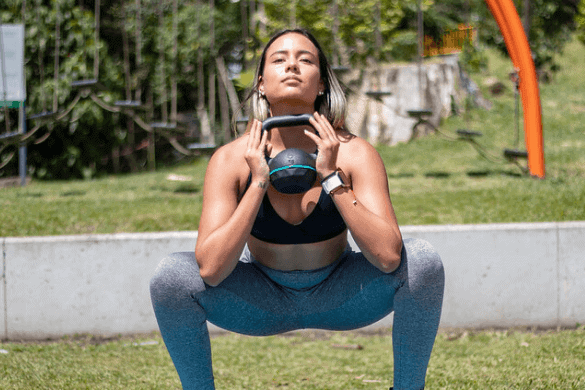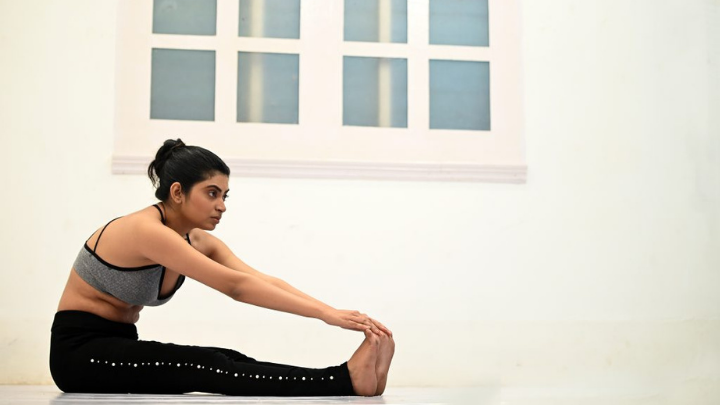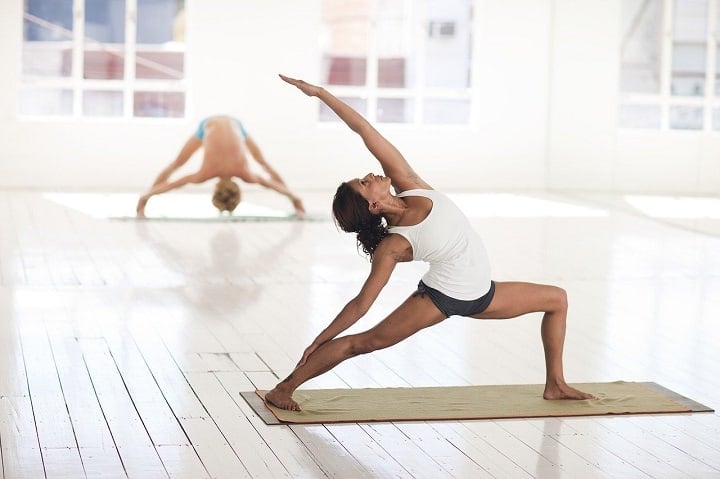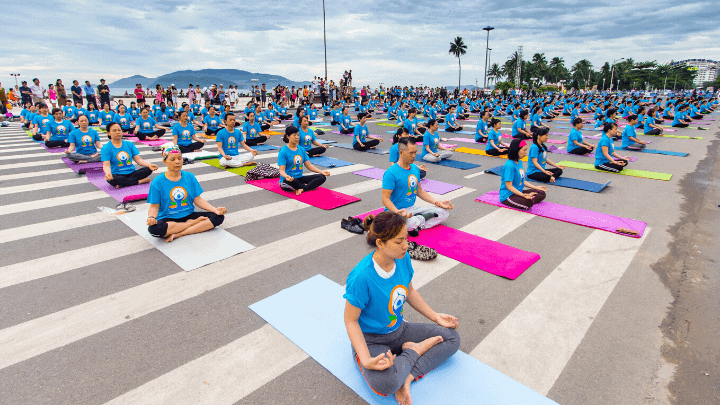The squat is an exercise that has long been crowned “The King” of whole-body movements.
But… Are there any disadvantages to squats?
The short answer is yes.
But you can avoid the disadvantages of the squat if you approach it in the best possible way. This post is going to explain exactly why the squat can be bad for you and how to make it as safe and beneficial as possible.
I am a qualified personal trainer and in this research-backed post, I’m going to make sure you know:
- The potential dangers of squats
- The importance of flexibility and mobility for your squats
- Three take-away bonus tips
Are you ready to avoid the pain and make some gains? Let’s jump into it!
The Squat
The squat has been performed by human beings since the beginning of time.
Primitive humans would:
- Squat when cooking
- Squat when hunting
- Squat when going to the toilet
- And so on…
Fast forward to the 1920s, the weighted squat was introduced by a German weightlifter called Henry ‘Milo’ Steinborn.
Now, although the squat seems like a very simple exercise, it requires a lot of technique and guess what?
There are over thirty different squat variations!
These include:
- Bodyweight squats
- Plyometric squats
- Weighted squats
- Equipment squats
You can do the traditional squat, with feet shoulder-width apart, or if you have both the strength and mobility:
You can do a single-leg squat with one leg off of the ground.
But no matter what variation of the squat you choose or however much weight you want to load, squats can be dangerous and harmful to your body if not performed with the right technique.
Which is why we must start with:
Squat Safety: How to Avoid the Potential Dangers of Squats
Now, we know that the heavier the weight you squat, the more dangerous the exercise becomes. But what if I told you:
Bodyweight squats can be dangerous too.
See, if the squat is executed incorrectly, you can still injure multiple joints. And if you add weight to this poor form?
It’s a recipe for a disaster…
So, let’s learn about the most commonly injured areas of a squat and how you can avoid them.
Back Injuries
How people injure their backs when squatting: Back/spinal injuries spread like a virus amongst beginner lifters. These type of injuries occur when the individual leans forward too much and/or posteriorly rotates (rounding of the lower back) at the bottom of the squat causing an excessive amount of force to go to the lumbar spine. How to prevent back injuries when squatting: To avoid spinal injuries you need to:
- Avoid leaning/bending forward: Instead, keep your back straight with a slight forward tilt so that the movement can flow
- Avoid placing the barbell on your neck: If you are using a barbell, rest it on your shoulders because a barbell placed on your neck would cause your upper back to round
- Mobilise your ankles: Ankle dorsiflexion is the extension of your foot at the ankle and if your ankle is well mobilised, you’ll have good ankle dorsiflexion. When you have good ankle dorsiflexion you avoid posteriorly rotating your lower back at the bottom of the squat (known as the but wink) which is well explained in this video:
If it is too hard for you to do the squat alone:
- Reduce the weight you are squatting: Reducing the weight will help prevent you from cheating your way back up
- Get a personal trainer to check your form: Experts will solve the problem and as Benjamin Franklin said: “An investment in your knowledge pays the best interest”
Summary: Back injuries are very common when you squat because people habitually round their back which places stress on the lumbar spine. People round their lower back because of poor hip and ankle mobility.
Knee Injuries
The second most common type of injury occurs in the knee joint. A knee injury is one of the biggest disadvantages of squats. How people injure their knees when squatting: Knee injuries occur during a squat when you either:
- Internally rotate your knee during the eccentric (lowering) or concentric (rising) in a squat
- Go down to the ground too quickly (known as a quick negative) causing a massive amount of pressure on your meniscus
- Overtraining, weak hips, and/or a muscular imbalance which leads to runners/jumpers knee (known as a patellofemoral syndrome) which is the pain you feel in the kneecap area [1]
How to prevent knee injuries when squatting: To avoid knee injuries you need to: a. Rotate your knees (external rotate) out slightly so that they are not caving in. You can do this by pointing your toes out, stretching and strengthing your hips and peroneus muscles which is all highlighted for you in this video below:
b. Strengthen your hips (most notably: the Gluteus Medius) [2] because this can cause the femur to track incorrectly. You can strengthen your hips by following this exercise here:
c. Go down slowly when squatting [3] and when you are at the bottom of the squat, explode to the top (without locking out your knee) so that you can avoid any knee tears like I’ve experienced in the past.
Now, here is a common misconception about squats:
A lot of trainers will recommend that you avoid moving your knees past the line of the toes on the way down.
While this makes sense from a perspective that the knee would receive too much force if it tracked past the toes, here is the dilemma:
Your knees should go over the line of the toes when squatting because this is a natural way for the kinetic chain to work properly [4].
This way the force from your legs can transmit through the kneecap and then down through the other side of the tibia and back up again (meaning the force can travel up and down – preventing your joints from taking the strain).
In fact, squatting with your knees over the line of your toes also reduce your hip torque by as much as 10X the hip torque you’d get when keeping your knees back [5].
We even move our knees past the line of the toes when walking up and down the stairs. But here’s the question:
Why is it that so many people are unable to move their knees past the line of their toes? Two reasons:
- The individual lacks ankle dorsiflexion meaning they hit a wall where their foot is unable to extend at the ankle – you can fix this problem here
- The calf and the Achilles tendon is too tight meaning it needs to be stretched – you can fix this problem here
Summary: Knee injuries occur when people either squat with excessive internal rotation, rush the exercise, and have a poor foundation of hip strength and ankle mobility, or all of the above.
Hip Restrictions
Although the hips are powered by one of the biggest muscle groups in the body (the glutes) you will find many problems with hip restrictions when you have either:
- Tight hips
- Weak hips
- Muscular strains
- Hip impingements
How hip injuries occur in squats: Hip injuries do not occur from squatting alone. Instead:
There are three reasons why your hips are sore, pinching or restricted.
These are: 1. Tight hip: If you have tight hip flexors, you can test how tight you are using this Thomas test here [6].
- How to loosen a tight hip: To fix this problem, you can break up the muscle fibres by doing soft tissue mobilisation here and then you can stretch your hip flexors by doing this stretch here. But, if this isn’t a problem for you, you can now test to see if you have weak hips:
2. Weak hip: To test your hip flexor strength, you need to apply a force to the Illacus/Psoas hip muscles. You can test this by lifting your knee up higher than you hip and holding it there for fifteen seconds as demonstrated here. If you’re unable to do this it means you need to strengthen your weak hips:
- How to strengthen a weak hip: Perform leg lifts. To do this, position your leg above 90° and raise your leg as high as it can go. Hold your leg up for a second, lower and repeat. You can see how this is performed here.
Note: The above issues could also be due to a muscular strain, so it would be best to consult with a professional physio therapist.
3. Hip impingement: A hip impingement is felt when you are at the bottom of a squat. This is because the femur runs into the front side of the hip socket (which happens in deep hip flexion).
- How to fix hip impingement: One thing you can do is to improve your capsular mobility through a banded joint mobilisation exercise demonstrated here.
Summary: Hip restrictions are very commonly felt when squatting and are caused either by tight hips, weak hips, muscle strains, or hip impingement. You can also injure your hips when squatting which Healthline have highlighted here.
The Importance of Flexibility and Mobility for Better Squatting

Immobile or inflexible lower body muscles/joints will prevent you from performing the squat properly, as well as increase the risk of injuries.
This is exactly why developing good flexibility and mobility is of prime importance [7].
Attending yoga or looking for information online (like you’re already doing now) is one of the best ways to improve your flexibility and mobilisation.
Furthermore, don’t skip your warm-up, as it is essential to functioning healthily.
A good warm-up consists of 5-10 mins of light cardio, along with dynamic stretching to activate the muscle fibres and prepare them for work.
Golfer Tiger Woods Story about mobility and stretching:
With several personal issues, four back surgeries, and a disc removal, it looked like an end to Tiger Wood’s career. Did you know that Tiger Woods was the first professional golfer to start weightlifting?
This was unheard of at the time and he received a lot of scrutiny and criticism for it.
But do you know what the key ingredient was that led to Tiger’s downfall?
His flexibility and mobility.
Two very important functions of a golf swing.
After overtraining to the point where he received severe spinal problems, he had to desert golf, the very thing that defined him.
Tiger took several strides to return back to his old self in 2018, but this time with careful strength training and consistent stretching and mobility exercises.
Many people doubted that Tiger could come back to the level that he was at in his prime (let alone play golf again).
To everyone’s astonishment, he didn’t just come back as a winner, he came back as a champion and regained major titles with victories over his opponents.
Tiger Woods winning Masters Tournament in 2019
Now, maybe this is an important lesson for all of us, not just in terms of the importance of mobility and flexibility in your life, but also as a lesson to never give up no matter how far away we actually are.
There is always a chance to redeem ourselves and Tiger has shown us that fighting back can seem unthinkable.
Summary: Mobility and flexibility is vital for your ability to perform squats without pain and with proper form. An excellent example of this is Tiger Wood’s return to glory.
Three Additional Bonus Tips for Squats
So far you’ve learnt what the most common injuries are when squatting. But:
I’ve also put together these three very helpful bonus tips that will turn your squats from a problem to a solution. These are:
- Tip 1. Start with a bodyweight squat
- Tip 2. Build a foundation of strength first
- Tip 3. Use safety bars
Here are our top 3 squat safety tips:
Tip 1. Start With a Bodyweight Squat

One of the best tips I can give you today (especially if you are new to the weight room) is to start off with bodyweight squats [8].
Why?
As you now know from reading this article, squats are very technical, and also very dangerous if performed incorrectly.But here’s the thing:
The chance of you injuring yourself is minimal in comparison to a heavier weighted squat.
Start off with a good amount of bodyweight squats and experiment with its different variations (feet positioning) until you feel more comfortable.
Once you feel solid and balanced, you can move on to barbell squats, where you can overload progressively.
You can do this by increasing the numbers of sets, reps, and weight.
Note: Can you do a single leg squat where one leg is off of the ground? A lot of gym-goers can’t and this is a 100% bodyweight exercise (perfect if you can’t get to a gym). Summary: Bodyweight squats (and bodyweight exercises in general) are great way to build a foundation of muscle which we are about to turn to in bonus tip number two.
Tip 2. Build a Foundation of Strength First
A common disadvantage of doing squats is doing them when you’re skinny.
If you don’t have enough lower body muscle mass to soak the tension from the weights there is a high chance this force will go to your lower back, hips, and knees.
And you know what happens then, right? Injuries…
To avoid this problem, make use of what we talked about above: bodyweight squats.
Before transitioning into barbell squats, work your way up with weighted plates or even a dumbbell, until you feel that you have achieved muscle growth in your lower body.
The feeling is quite unique and you will know when you are ready for heavier barbell squats.
You’ll notice a solid pump of the thighs, hamstrings and glutes and a prominent mind-muscle connection before performing any heavy lower body lifts.
Summary: A foundation of strength is like the roots of a tree, without it, you wouldn’t be able to cope with a sudden gust of wind or a heavy barbell that push you off balance.
Tip 3. Use Safety Bars
If you are a more advanced trainee, doing heavy squats to failure outside of a squat rack is dangerous.
Though the risk will instil a sense of fear into you (thus making you push harder) it’s important to insert safety bars/pins on your heaviest sets.
This is because if you fail, you’ll be able to safely drop the weight in case of absolute muscular failure.
Alternatively, you can drop the bar behind you and step forward, but that may be dangerous, especially in a crowded gym with people around you.
Summary: Safety bars are vital when it comes to lifting heavy weights incase you reach failure and you have nowhere to drop the weight.
Conclusion
Though the squat is one of the best exercises for overall strength, power, and athleticism it brings many hidden dangers which the fitness have been confused about for so long.
The first and most important step to avoid any and all injuries is making sure you have the following in check:
- Good mobility and flexibility
- Proper exercise execution
- A slower negative and explosive concentric
- A logical progression from light to heavy weights
- Proper rest in-between training sessions
If all of the above are on point, you will without a doubt minimise the chances of injury and maximise your chances of developing a strong musculature no matter what exercise you do.
Now it’s over to you:
What have you learnt about the disadvantages of squats?
Could it be a lack of flexibility and mobility?
Or perhaps you’ve learnt about how important ankle dorsiflexion is when performing the squat?
Either way, let us know by leaving a comment below. Follow us on Instagram right now!







